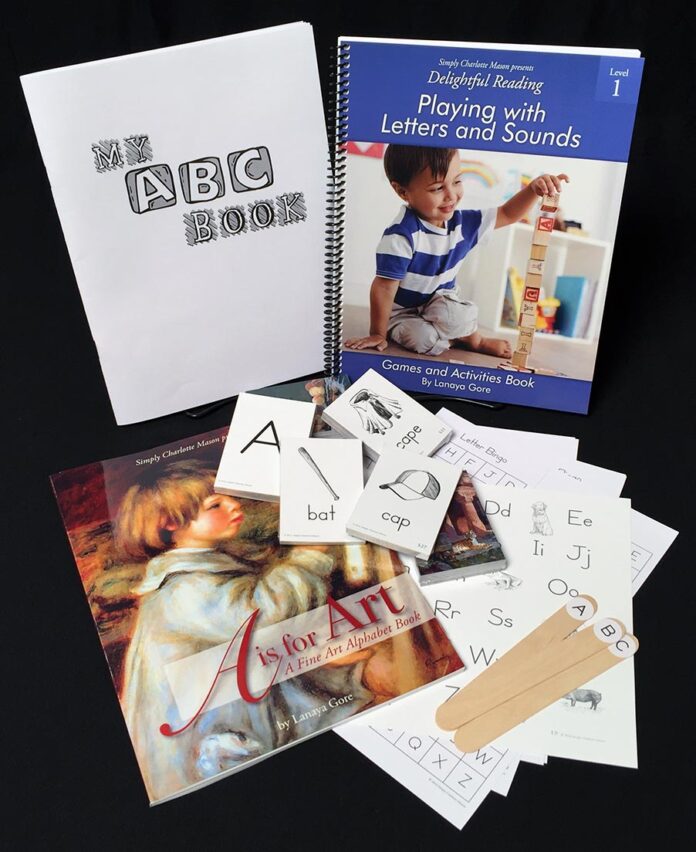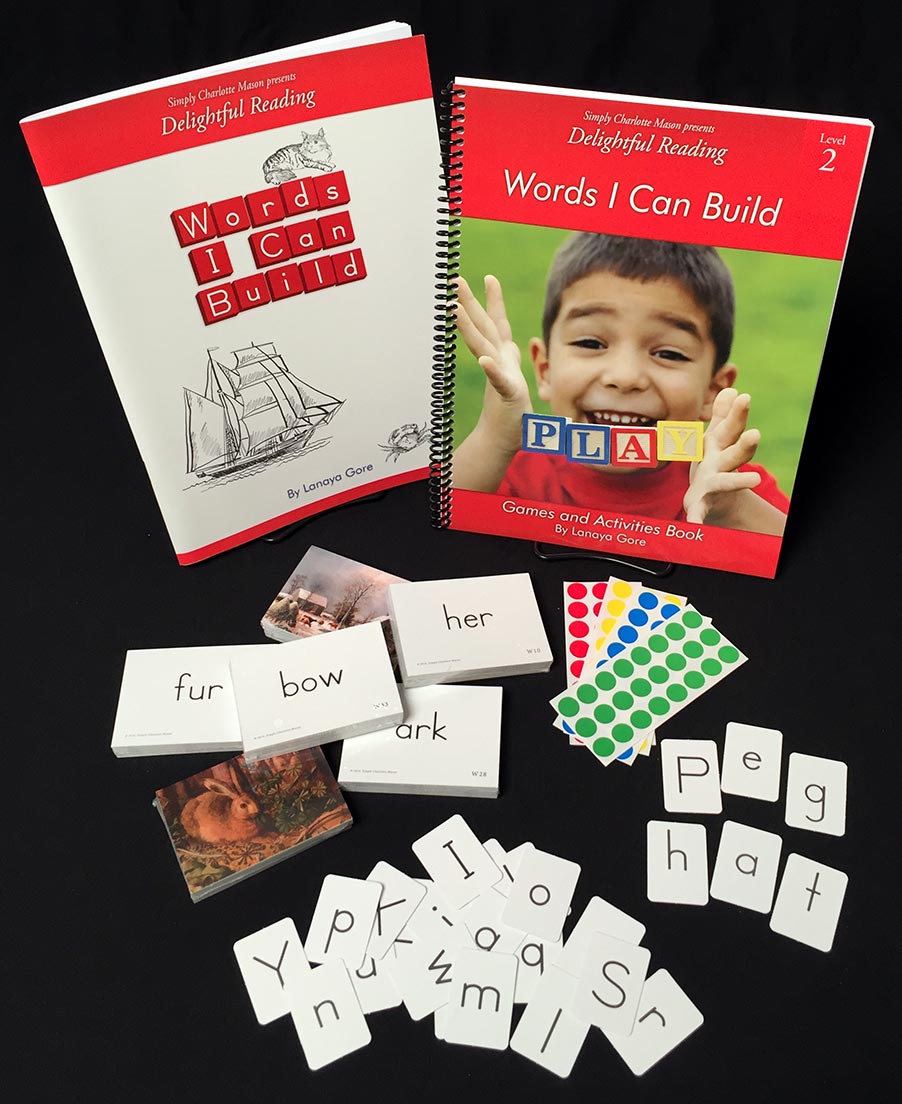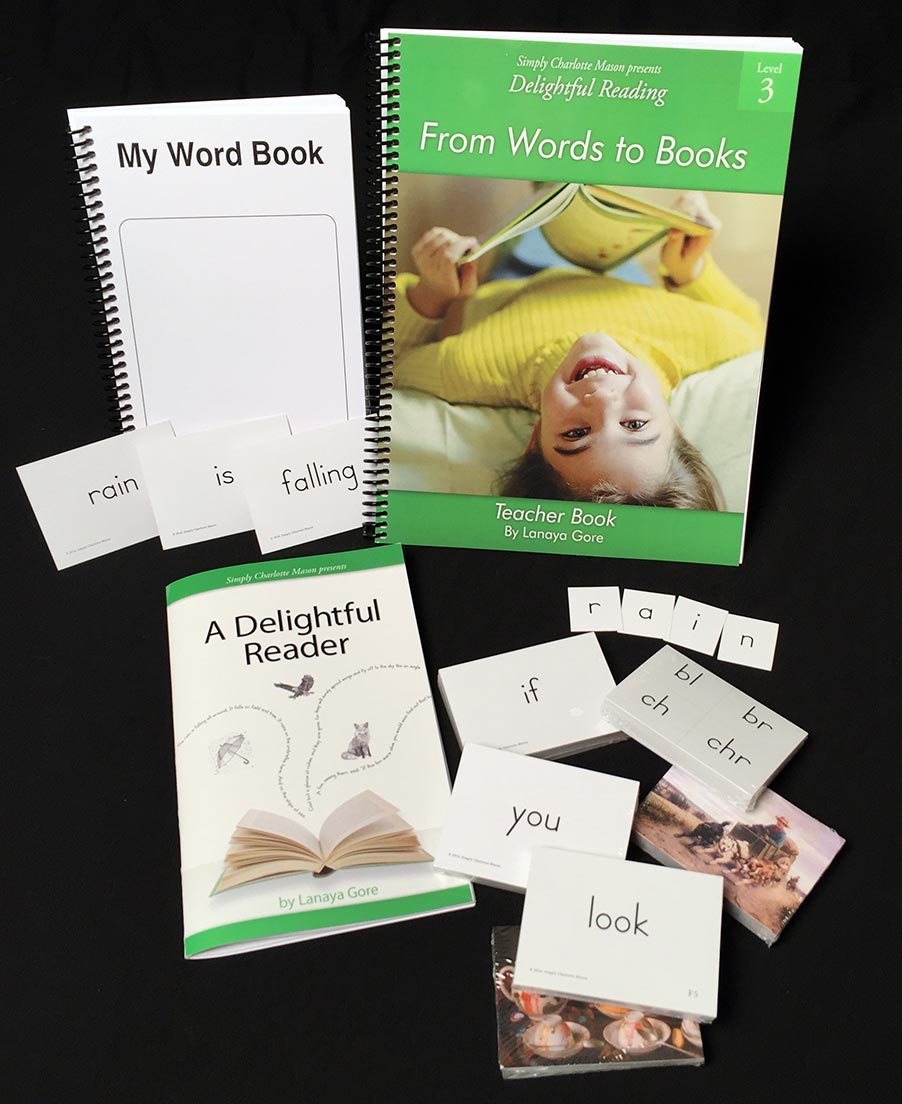60-day returns • free shipping on USA orders $129+
Learning to read plays a big part in your child’s education, especially if you are trying to give him the tools for self-education and a lifetime of learning. But does your child need to be reading before he begins that journey? Do you need to teach your child to read before he starts first grade?
The answer is No. Emphatically No. And especially No with the Charlotte Mason Method. This beautiful, generous education does not depend on your student’s being able to read for himself in first grade. Let me tell you why.
It is possible to give your student a delightful and rich education even if he’s not reading for himself yet. How? Well, first let’s talk about the mindset and then we’ll look at the methods.
The Mindset
A vital mindset of the Charlotte Mason approach is that your child is an individual person and he deserves respect as a person. And respecting your child as a person means not trying to force him to grow at the same pace as other children just because their birthdays happen to be within the same year. Those individual children have different personalities, different strengths, different interests, and different experiences. They are all learning and growing, but they are not learning all the same things at the same time at the same rate.
Some might naturally take to math concepts; the ideas of adding more or taking some away just make sense to them. And those children grasp those concepts quicker than some others whose minds are more naturally drawn to letters and words or to pictures and colors, for example. Respecting each child as a person means allowing each person to discover where his individual strengths lie and where his weaker areas lie, and to grow at his own pace in each of those areas.
Grade levels should not mandate the pace at which your child learns. Grade levels are simply manmade labels that were created to help organize large groups of children that gathered to be educated in a community pool. When you are teaching your child at home, you have the wonderful freedom to tailor his education without worrying about those labels. Don’t worry about grade numbers. You are educating an individual. Allow him to learn and grow at his own pace.
Grade levels are simply manmade labels that were created to help organize large groups of children that gathered to be educated in a community pool.
So that’s the mindset, but how can you make that happen—and especially as it relates to reading? Doesn’t a child have to be able to read and write in order to do “first grade level” work? No, he doesn’t. With Charlotte Mason methods, it’s easy to give your student a great education even if he can’t read.
The Methods
You see, the books that we use are not written on a first grade level and are not intended for the student to read for himself. In reading lessons, yes; but in every other subject in those early elementary years, the teacher reads aloud to the student and asks him to respond verbally, not in writing. Handwriting and reading are reserved for specific lessons in handwriting and reading. The other subjects don’t require those skills.
There’s a great benefit to that approach. Your child can hear and comprehend books that are at a much higher level than he can read for himself, and he can express what he has learned at a much higher level than he can write for himself. So having you read aloud from those great books and asking him to respond verbally allows your student to learn at a deeper level, even if he is not reading and writing for himself yet. Plus, those higher level books expose him to great writing, to hearing stories well told and ideas well put.
Now, you may be thinking, “How long is that going to take with me reading aloud everything every day?” The answer is “Not long at all.” When you use Charlotte Mason methods, there is great variety in each day’s lessons. You are not sitting and reading all day long. In fact, in the early elementary years, you are reading from only two, sometimes three, books per day (and those are short lessons). All of the rest of the lessons involve going outside, listening to music, working with objects, looking at art, making things with your hands, and other guided discovery that covers a wide range of subjects and use different parts of the brain and body. It’s not all reading and writing.
The beauty of a Charlotte Mason approach is that learning can still happen even as your student is growing in his reading skills. You can give your student a wide range of knowledge that does not depend on his being able to read. And for students who continue to struggle with reading, that learning-through-listening can continue as long as needed. With the Charlotte Mason approach, your student can learn history, science, geography, Bible, literature, art, music, math, poetry, and more regardless of his reading or writing level.
So yes, provide opportunities for your child to play with letters and their sounds. Be faithful to read to him and to introduce the ideas of how letters fit together to make words. Some children will grasp those ideas quickly and take off, others will take longer, and some may take even longer. But remember that each child is an individual. Give him the respect he deserves as a person.
Don’t Push
Be careful not to push when it comes to learning to read, whether that push arises from panic or from enthusiasm. Some parents panic because they feel like their child is “behind” and should be at a certain reading level by a certain age. To those parents I would say, Don’t allow a number to pressure you or your child—whether that number is his age or the label of a grade level. When you teach the child as a person, there is no “behind”; there is only where you are now and what is next.
When you teach the child as a person, there is no “behind”; there is only where you are now and what is next.
Some parents push because they love reading so much themselves, and they want their child to experience that joy. To those parents I would say, By all means, let your child see your enthusiasm for reading, but don’t allow it to make him feel like he’s not measuring up.
You see, when you put pressure on your child to read when he’s not developmentally ready to do that, you can inadvertently set up two destructive attitudes: One is “I’m not good at reading” and the other is “I don’t like reading.” Neither of those attitudes will serve your child well. So give him respect as an individual and let him learn and grow at his own pace. Be faithful, be enthusiastic, but don’t push.
And even if your child is not yet reading for himself when it’s time to start formal lessons in what we call first grade, rest assured that your student can still learn and grow in a wide variety of subjects, he can still receive a generous and delightful education, even as he continues to go at his own pace in learning how to read.
It’s possible and pretty simple with the Charlotte Mason Method.
Charlotte Mason reading Kits
If you want help with teaching your child to read the Charlotte Mason way, we have reading kits that are designed to let each child go at his own pace through short play-based, multi-sensory activities. Kit 1 is called Playing with Letters and Sounds, Kit 2 moves on to Words I Can Build, and Kit 3 helps you guide your student From Words to Books.
Podcast: Play in new window | Download
Podcast (podcastv): Play in new window | Download




Sonya,
I’m an English major, educator, and veteran homeschool mom, but with child 3 reading has taken a slow turn, and I have felt anxiety. This post was such a timely blessing and reminder that we must respect the child and not push. Thank you!